Caernarfon |
|
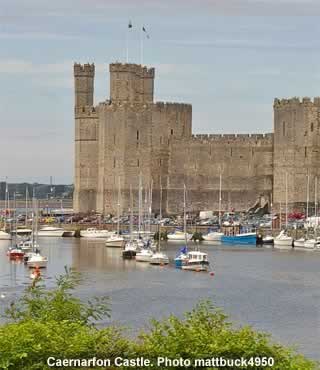 |
|||
A Welsh town overlooked by its castle, a symbol of English medieval strength |
||
Listen to this article |
||
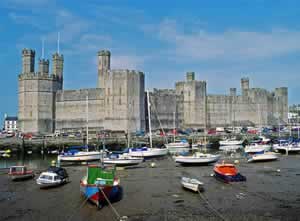 Caernarfon Castle Photo by Herbert Ortner |
||
In the 13th century, the countrymen of Wales rebelled against the rule of the English King, Edward I. He responded to this challenge by conquering the entire country! In the aftermath of this invasion, Edward wanted to ensure that he kept control. He immediately ordered the construction of a series of large, dramatic castles in the north-western Gwynedd region, which he populated with English soldiers. |
||
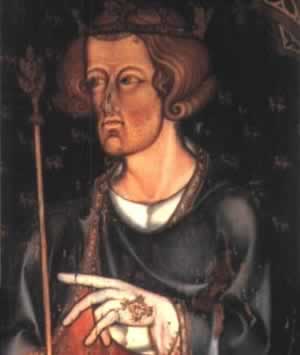 King Edward I Photo in the Public Domain (PD) |
||
The largest and most impressive of these was Caernarfon, which Edward intended to be much more than just a defensive fortress. It would also be a seat of government, and a royal residence, as well as a symbol of English strength in Wales. Edward wanted the castle to become the most important building in the country, and to this end, he ensured that his son was born here, in 1284. This young boy would go on to become King Edward II, as well as the first-ever Prince of Wales. Years later, the castle was still so highly regarded that it staged the investiture of Prince Charles with that same title, in 1969. |
||
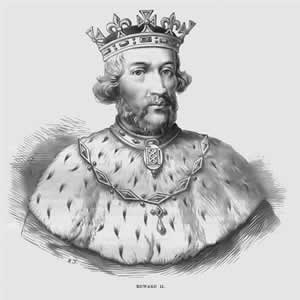 King Edward II Photo in the Public Domain (PD) |
||
When he ordered the construction of Caernarfon Castle, Edward knew that such a symbolic building would need to look the part. And even today, seven centuries later, you can tell that this goal was achieved. Its huge battlements and towers look as imposing as ever, looming over the houses of Caernarfon town. Supposedly, the structure's design was based on the walls and gatehouses at Constantinople. The similarities can be seen in the polygonal towers, and the colour bands on the walls. The location of the fortress was equally important, guarding the mouth of the Seiont river. There had previously been other castles in this strategic spot, dating all the way back to Roman times. Interestingly though, despite its large ambition, and even larger funding, Caernarfon Castle was technically never finished. You can still see several exposed joints, spread throughout the castle, which were intended to join up with additional walls that were never built. |
||
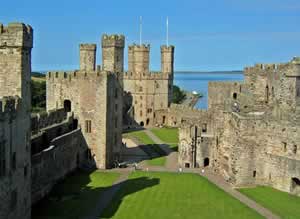 Caernarfon Castle Photo by Petrusbarbygere |
||
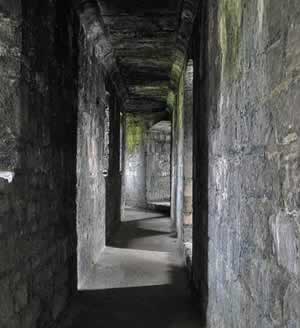 Inside Caernarfon Castle Photo by nikoretro |
||
Despite this, the fortress is still awe-inspiring. It has been named as a World Heritage site, and is open to the public all-year-round. The castle's grounds hold various exhibitions and shows throughout the year, including theatre, military re-enactments, and more. There is also a permanent museum for the Royal Welch Fusiliers, a famous regiment of the British army that has performed countless heroic deeds since its inception in the 17th century. |
||
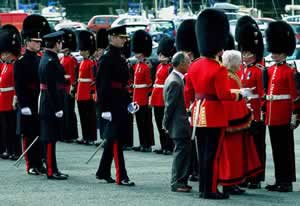 Inspecting the Welsh Guard at an event in Caernarfon Photo by The Ancient Brit |
||
The castle is surrounded by Caernarfon, the town from which it takes its name. There is a pretty harbour here, filled with colourful boats. The most famous images of the area are of these masts and hulls, with the huge towers and battlements of Caernarfon Castle looking on in the background. The town also contains the Black Boy Inn, which is one of the oldest public houses in Wales. Its low ceilings and thick walls are evidence of a history which stretches back nearly 500 years. |
||
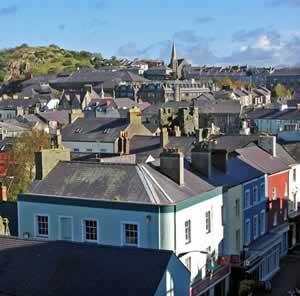 Part of the town of Caernarfon Photo by Fwiffo |
||
Caernarfon town is also known as being a great location to hear the Welsh language. The population here has a higher proportion of Welsh speakers than anywhere else in the country, with around 86% describing themselves as fluent. |
||
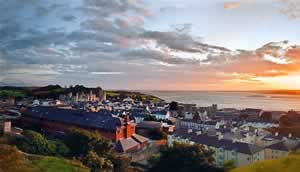 Sunset over Caernarfon Photo by Richard0 |
||
The combination of this community and the castle makes Caernarfon one of the most famous locations in the entire nation, and one of the best representations of Welsh culture and history. |
||
|
||
Caernarfon Castle is open daily, 10am to 5pm (11am to 4pm in winter). Entry costs around £5. Castle Ditch Caernarfon Gwynedd LL55 2AY. Tel: 01286 677617 |
||
|
Pocket Britain is optimised for use on a smartphone or tablet with internet access. All content is subject to copyright. All reasonable methods have been used to ensure information supplied is accurate at the time of publication. However, it is advisable to check information before relying on it. Privacy Policy |